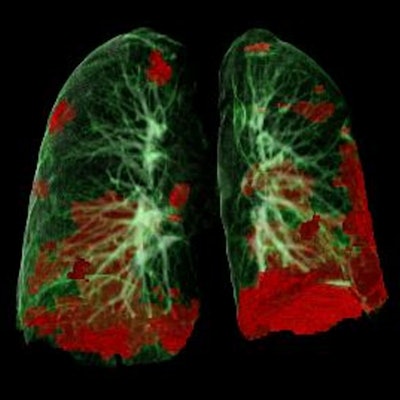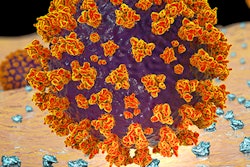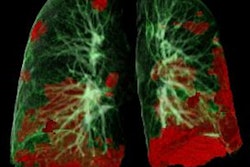
A study that includes a cohort of more than 10,000 patients has found that throughout the COVID-19 pandemic in 2020, chest CT demonstrated 80% accuracy in diagnosing COVID-19, according to research published June 29 in Radiology.
The findings add positive data to a debate over CT's role in a health crisis that started almost as soon as COVID-19 was identified, wrote a team led by Dr. Marie-Pierre Revel, PhD, of the University of Paris.
"In [our study] of 10,735 subjects suspected of COVID-19 pneumonia, the overall CT diagnostic accuracy was 80%, considering [reverse transcription polymerase chain reaction] as the reference standard, and increased to 86.3% after five days of symptoms," the group noted.
Throughout 2020, researchers examined CT's effectiveness for identifying COVID-19, with some arguing that the modality shouldn't be used as a first-line diagnostic tool and others praising its efficacy. As part of the STOIC project (Study of ThOracic computed tomography In COVID-19), Revel's team sought to mine a large set of patient data in hopes of further clarifying chest CT's role in COVID-19 diagnosis.
Study participants presented at 20 French hospital emergency departments between March 1 and April 30, 2020; each underwent chest CT and reverse transcription polymerase chain reaction (RT-PCR) testing. A group of 20 readers with varying degrees of experience reviewed the CT exams (blinded to initial reports), RT-PCR results, patient demographics and clinical symptoms, and eventual outcomes.
The investigators found that, using RT-PCR as reference standard, chest CT had a sensitivity of 80.2% and a specificity of 79.7% for identifying COVID-19 and predicting the need for intubation and the risk of death at one-month follow-up. Extent of pneumonia on chest CT was the best predictor of whether patients would need intubation or whether they were at risk of dying (odds ratio, 3.25).
The team also found that chest CT interpretation for COVID-19 diagnosis was not negatively affected by reader experience. Intraobserver agreement was perfect for 16 of 20 readers, with a kappa of 1.00. And it was almost perfect for the remaining four readers, with kappa ranging from 0.82 to 0.92, the authors noted.
The study contributes important feedback on CT's performance during the pandemic, Dr. Geoffrey Rubin of the University of Arizona in Tucson wrote in an accompanying editorial.
"[The study] provides a valuable historical record regarding the use of thoracic CT in a highly volatile moment during the early days of the pandemic," he wrote. "The creation and curation of a 10,735 patient cohort presenting with suspected COVID-19 during a two-month window was a vast undertaking to pursue amidst the disruption of the pandemic. Once publicly available, these data will be in demand by a variety of investigators seeking to better understand the manifestations of COVID-19 and inform future healthcare practice."



















